Ryan Hall's Blog, page 261
April 28, 2016
Out There: What’s Fair?

As I type these words, I’m sitting in the corner of my neighborhood coffee shop watching a kindergarten meltdown of epic proportions. I’m not sure what prompted this explosion of wails and snot, only that this tantrum-tastic girl has been wronged.
“NO!” she keeps screaming over and over, swinging an umbrella at the adults in her midst like a miniature Britney Spears, “It’s not fair! IT’S NOT FAAAAAAAIR!”
Girl, I get that. I’ve done the exact same thing in my past. And by “my past,” I mean “sometime in the past week.”
The law of “fairness” is one that we enforce from an early age: Charlie got a bigger half of the cookie than I did! It’s not Jenny’s turn to sit in the front seat! We believe that fairness is a black-and-white issue, where everyone takes turns and gets an equal share of the pie.
“Life isn’t always fair,” our parents would sigh in response to our whines, and we pooh-poohed such a notion. If you do the work, you should get the reward. If it’s your turn, no one else can have it. If there are two people, the pie gets precisely sliced down the middle. It’s all so simple, really!
This mode of thinking doesn’t change much as we get older, by the way. We just get better at stifling the temper tantrums. The idea of fairness, though, still saturates our brains.
It’s particularly true of running. In this sport, we’re led to believe that if we work hard, we’ll reap the rewards. If a person runs consistently, they’ll get stronger. If someone does speed work, they’ll get faster. We’re told that if we want to get a PR or qualify for Boston or lose those 10 pounds, we just have to do the work. It’s all so simple, really!
Except that it’s not. Speed work sometimes leads to injuries, not PRs. Consistent running can sometimes lead to burnout, not glory. Some weeks, running can feel like pushing a rock up a hill until it rolls back down on you while some fresh-faced runner skips past while laughing and IT’S NOT FAAAAAAAAIR.
It’s not fair that _________________ (he got into Boston on the first try, she can run faster than me, spandex shorts don’t give her a muffin top, those shoes don’t give him blisters, he got a lottery spot to my favorite race, she recovers faster, she only has one chin in race photos, he never gets injured).
Tell me you’ve never once said that, not even in your head.
Riiiiiiiiight. I haven’t, either. (Wink. Nod. Air-gun.)
Except for every single time I’ve been injured. Or when a colleague of mine announced she scored a last-minute charity entry to Boston and would run it on zero training. Or this morning, when my husband took off his shirt and I realized he went from “winter weight” to “six-pack abs” overnight.
Hey! I’ve worked my ass off, too! How come I don’t get the same rewards? It’s not fair, you guys! Sure, I’m happy for my faster friends and my good-looking husband, but that doesn’t keep the green-eyed monster from popping up from time to time. The injustices we suffer make us want to throw ourselves onto the ground and wail.
Our parents were right: Life isn’t always fair. And maybe that’s a good thing.
You see, if everyone followed the same straightforward trajectory, there would be no big, scary goals; we would already know that X plus Y equals Z. It would all be so boring.
The alchemy of the human experience shows us there’s more than one way to succeed. These so-called injustices give us inspiring heroes, scrappy underdogs, and unexpected life lessons. We need those just as much as – if not more than – we need formulaic tales of triumph.
If you do the work, you get the reward. It may not be the reward you want right this second, but eventually you might see it’s what you need. So stop your temper tantrum, wipe your nose, and get cracking. There is something to be gained from pushing the rock up the hill.
It’s all so simple, really.
* * *
About The Author:
Susan Lacke does 5Ks, Ironman Triathlons and everything in between to justify her love for cupcakes (yes, she eats that many). Susan lives and trains in Salt Lake City, Utah with three animals: A labrador, a cattle dog, and a freakishly tall triathlete husband. She claims to be of sound mind, though this has yet to be substantiated by a medical expert. Follow her on Twitter: @SusanLacke.
The post Out There: What’s Fair? appeared first on Competitor.com.
April 27, 2016
BMW Designs Advanced Racing Wheelchair for Team USA
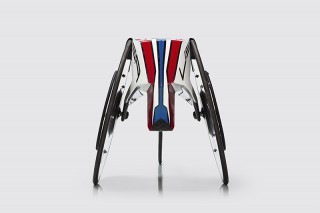
Photo Gallery
1 of {count}
Back to Start
View Larger Image
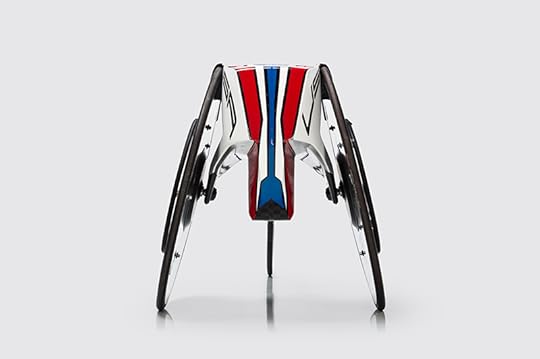
BMW Team USA Racing Wheelchair
Photo: Courtesy of BMW
View Larger Image
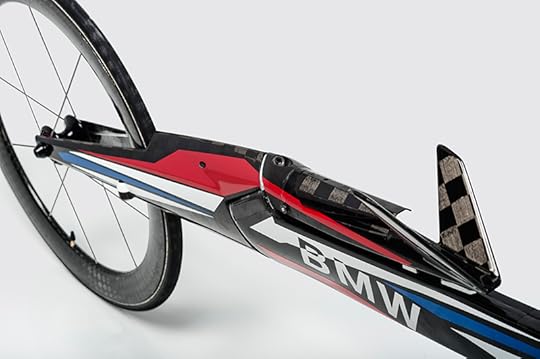
BMW Team USA Racing Wheelchair
Photo: Courtesy of BMW
View Larger Image
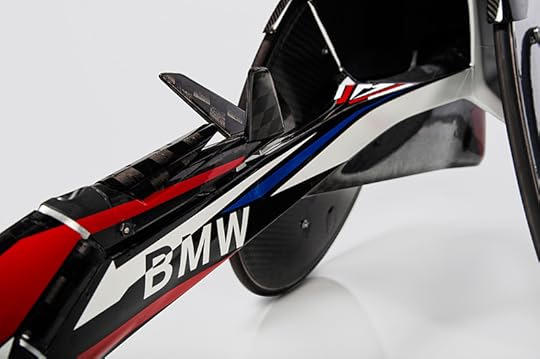
BMW Team USA Racing Wheelchair
Photo: Courtesy of BMW

More Galleries
With 100 days left until the 2016 Olympics in Rio de Janeiro, today BMW unveiled the new racing wheelchair designed for the U.S. Paralympics track and field team. For the past year and a half, BMW’s global creative consultancy Designworks has been working in close collaboration with Team USA athletes and coaches, including four-time Paralympic champion Tatyana McFadden, to develop a more speed efficient racing chair.
“It’s been such a learning curve from a year and a half ago,” said McFadden who will be entering her fifth Paralympic Games at Rio and competing in all seven track and field events. “We’ve had doubts, we talked to the team [at BMW Designworks], and we discussed what racing chairs are, what they look like, the different parts—and to finally see it and check it out—this whole process has been amazing.”
As the official mobility partner of the U.S. Olympic Committee since 2010, this is BMW’s fourth technology project for Team USA. However, it’s the first time the automobile company has worked with and produced equipment for Paralympic athletes.
“From fittings and immersion sessions, to data analysis and real-time testing, we had the unique opportunity to build a fully customized racing device,” said Brad Cracchiola, associate director of BMW Designworks and project lead, in a press release. “We’re eager to complete the final product and look forward to watching Team USA compete.”
Cracchiola outlines that the advancements in the new racing chair focus on improvements in aerodynamics, a complete chassis redesign and the chair’s customizability to fit the athlete’s body. For example, taking some inspiration from auto racing, BMW designed custom body molds that shape around the athlete’s body within the chair, decreasing in-chair movement during a race. And unlike most racing wheelchairs made of either titanium or aluminum, BMW used a carbon fiber material throughout to help minimize drag and increase aerodynamic efficiency.
“It’s all about a seamless integration of the athlete with the wheelchair,” Cracchiola said.
BMW took it even one step further and created 3D printed racing gloves, custom-molded to fit the athletes’ hands, adding personalized details such as finger vents and straps for athletes who requested it.
As for whether this chair will give Team USA an edge in Rio, Cracchiola said, “First and foremost I think all the credit needs to go to the athletes. They’re the ones who have been training for years and years and their performance is winning the races. That said our goal all along has been to help them bring out their best performance and translate their ability to speed. I won’t make any guesses, but I feel good about what we’ve done for them in terms of optimizing their performance.”
Team USA athletes have already started training in their new racing wheelchairs—McFadden described that some areas of the chair do feel faster than what she’s used to—and the final fleet of chairs will be delivered to Rio ahead of the U.S. Paralympic athlete arrivals this summer.
The post BMW Designs Advanced Racing Wheelchair for Team USA appeared first on Competitor.com.
After Surviving a Horrific Car Wreck, Peggy Kohlmeyer Finds Joy in Running
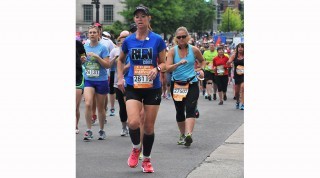
Peggy Kohlmeyer (Bib No. 28112) has run more than 200 races in the years since a car accident nearly killed her.
Peggy Kohlmeyer has never thrown away a racing T-shirt. She sewed 34 into a quilt; the other 190 are neatly folded in boxes, stored in the attic.
“I don’t wear them,” said the 51-year-old Huntersville, N.C., teacher. “To me, you know how you take a picture to remind yourself of something? There’s a story behind each (T-shirt).”
Some 30,000 runners and walkers will hit the streets in the 5K, half marathon and marathon at St. Jude Rock ‘n’ Roll Nashville on Saturday. Each can tell a story. Kohlmeyer’s tale is one of a miraculous comeback. Thirty-one years ago she was struck head on by a drunk driver going more than 70 miles per hour.
The emergency room doctor’s words to Kohlmeyer’s father: “I don’t expect her to live.”
***
It was the first day of the summer quarter at the University of Georgia, June 17, 1985.
Kohlmeyer was a 20-year-old senior at the University of Georgia, determined to graduate before turning 21. Two electives, three P.E. classes, plus an internship and Kohlmeyer would earn her degree in fashion merchandising.
She worked at a women’s clothing store and shortly after close that night eased her Mazda GLC out of the mall and turned onto Atlanta Highway.
The road climbed a hill. At the crest of the hill, in front of a funeral parlor, Pike was met head on by a man driving in the wrong direction. His blood-alcohol level measured .27, more than three times the legal limit. He had been released from jail earlier that day for DUI.
The litany of injuries Kohlmeyer suffered are almost impossible to comprehend: 24 fractured bones, including her pelvis; fractures to her right tibia and fibula, leaving her right leg 1 1/2 inches shorter than her left; her upper lip nearly ripped off her face; all but five teeth damaged; a fractured upper jaw bone, the bone lodging into her brain.
She was on a ventilator for five days and rested in a coma for 14 days.
“I was really afraid she was going to die,” said Kohlmeyer’s father, Ben Pike.
Kohlmeyer would be hospitalized for three months, a span that has been wiped from her memory. She can’t recall the accident. Doesn’t recall the 16 days spent in an Athens hospital. Doesn’t recall the next 2 1/2 months she spent recovering in a Columbus, Ga., hospital.
Her next recollection was of the day she was released from the hospital, her father lifting her up in a wheelchair, loading her in a van, taking her to his home where she spent months recovering.
“I knew something happened if I was at the hospital,” she said.
Kohlmeyer’s physical, mental and emotional health was so fragile that family members didn’t want to shock her with details of the grizzly crash.
She didn’t learn about the accident until about a week after being released from the hospital when a newspaper reporter reached her by phone. The man who had hit her head on had committed suicide.
Kohlmeyer’s recovery was long and arduous. She left the hospital with both legs in casts, one up to her groin, the other above her knee. She weighed 135 pounds before the accident. With her jaw wired shut for months she shriveled to 87 pounds. Her brain had been in a fog and it took time for the clouds to lift.
“If somebody pointed to a light switch on a wall, I didn’t know what it was,” she said. “‘It turns the lights on and off.’ ‘Oh yeah.’ I didn’t know what a fork was. I was clueless.”
Before the accident, Kohlmeyer had planned on jogging the July 4th Peachtree Road Race, now the world’s largest 10K. At the time, she was far from athletic.
“When I was in school, perspiration wasn’t glory,” she said. “You didn’t want to sweat. (But) it was the ‘in’ thing to do, to graduate from college and do the Peachtree.”
Kohlmeyer remembers telling a doctor upon her hospital release that she planned to run the Peachtree Road Race one day.
“Let’s see if you can walk,” the doctor replied.
Three years, 18 days later, Kohlmeyer finally ran the Peachtree 10K, her first-ever road race, finishing a little under an hour. She thought she was going to be one-and-done, moving on to other challenges. But she was meticulously logging her miles in notebooks by then. The count is now at 17,000 and climbing.
A second race followed three years later in 1991, then her first half marathon in 1996, her lone marathon in 2004 and now she’s a pound-the-pavement junkie with those 190 T-shirts stuffed in her attic.
“It’s the endorphins,” said Kohlmeyer. “I call it my MC Hammer time because you can’t touch this. You go out running, you don’t have a cell phone. You’re just out there, running.”
“She’s amazing, an inspiration,” said running partner Melissa Caldwell. “She’s got one leg shorter than the other, but you’d never know. She never complains about anything.”
Kohlmeyer’s resolve is exemplified outside of running. Shifting her career focus after the accident, she earned her teaching credential and a master’s in middle school education and has taught for 25 years.
“Running, teaching and reading,” said Kohlmeyer, “those are my passions.”
“I admire her commitment, her self-discipline and her accomplishments,” said Kohlmeyer’s father. “I’m tremendously proud of her.”
The St. Jude Rock ‘n’ Roll Nashville Half Marathon will be a repeat for Kohlmeyer. She finished last year’s 13.1-miler in 2 hours, 33 minutes, 30 seconds.
“Rock ‘n’ Roll races are phenomenal,” said Kohlmeyer, who has also knocked off the Virginia Beach half. “So incredibly well organized.”
Near the end of a phone interview that lasted longer than an hour, Kohlmeyer was asked why she runs.
“Because I can,” she said. “Because I can. There might be other things I can’t do. We’re all human. I’m not going to be a Picasso. I’m not going to be a Rembrandt. But I know what I can do. And I can run.”
The post After Surviving a Horrific Car Wreck, Peggy Kohlmeyer Finds Joy in Running appeared first on Competitor.com.
Workout Of The Week: Threshold Repeats
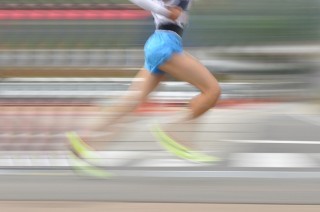
Brad Hudson's threshold repeats workout gets the body used to changing gears on tired legs. Photo: www.shutterstock.com
The coach: Brad Hudson of Hudson Elite, Boulder, Colo.
The athlete: Three-time U.S. Olympian Dathan Ritzenhein (Editor’s note: Ritzenhein trained under Hudson from 2004-2009.)
When they did it: According to Hudson, Ritzenhein completed this workout several times before he ran a personal best of 8:11.74 for the 2-mile run in 2007.
Why they did it: Hudson says this workout is a fantastic staple that can be used in almost any phase of training because the pace of the repeats can be modified according to fitness. Ritzenhein did this workout the week of his race and used it as a confidence booster. Because of the variability of speeds during the repeats, this workout gets the body used to “changing gears” — something runners have to do during a race in order to adjust to course elevation changes, keep up with rivals if a surge is injected, or execute a final sprint to the finish.
How they did it: Ritzenhein completed two sets of repeats that entailed doing the following in each set: 2 x 1.5-mile progression run with 3 minutes of rest between runs, followed by 8 x 200m with a 100m jog between reps. Hudson had Ritzenhein begin the 1.5-mile repeats at his goal half-marathon pace. After the first 800-meters, Ritzenhein picked up the pace to 10K race pace for 800m, and then finished the final 800 meters at 5K race pace. The 200-meter repeats were run at 3K race pace.
How you can apply the workout: Hudson’s take is that this workout is universally applicable to all middle- and long-distance runners. It’s also a workout you can run early in the season, when your fitness isn’t as refined, or as a confidence-building workout just before your race when you want to make sure you are ready to run your desired pace. The key, he says, is to remember where you are in your training cycle. If it’s early in the season, start slower on the 1.5-mile repeats. Don’t run any faster until you transition to the 200-meter repeats.
RELATED: Workout Of The Week: Progession Runs
The post Workout Of The Week: Threshold Repeats appeared first on Competitor.com.
Former American Record Holder Chris Solinsky Retires From Professional Running
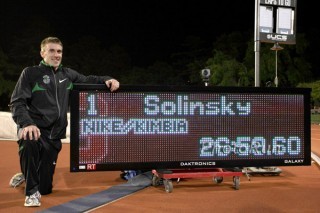
In 2010, Chris Solinsky broke 27 minutes for 10,000m, shattering the American record. Photo: PhotoRun.net
Chris Solinsky, the first American to break 27 minutes for 10,000 meters, has ended his professional running career, according to KIMbia Athletics, the athlete management agency that represented him. Solinsky reached the decision earlier this year after a series of injuries dashed his hope of making the 2016 Olympic team at 5,000 meters.
“This summer I felt like I was getting rolling again,” Solinsky, 31, says, “but in the fall I had Achilles tendinitis in my right leg that was slowing me down, and then my left calf seized up and I had a heavy limp. By the first of the year I hadn’t run regularly for six weeks. I thought, ‘I can’t even do simple stuff without falling apart. How am I going to get to the Trials, much less qualify for the Olympics?’ ”
With personal bests of 12:55.53 for 5,000 meters and 26:59.60 for 10,000 meters, both set in 2010, Solinsky is the second fastest American ever at both distances. But the following year, he tripped over his dog while he was going down stairs, and what had been a chronic left hamstring strain became a full-blown avulsion, in which the hamstring tendons separated from his pelvis. Chris had surgery to reattach the hamstring in September 2011.
“I was 100 percent convinced I could get back to the level I’d been at,” Solinsky says. In the spring of 2013, he had his best post-surgery result, 13:23 for 5,000 meters. But he was unable to sustain solid training without injuries repeatedly popping up. After deciding July’s Olympic Trials were out of the picture, “I thought maybe I’d just keep running and compete when and where I can,” Solinsky says. “But I don’t really want to do that. That would feel like I was running for a paycheck, and running has never been like that for me.
“I’m very appreciative of what Nike has done for me over the last nine years,” Solinsky continues. “It didn’t feel fair toward Nike to just be going through the motions. Nike was behind me 100 percent maybe longer than they should have been. They were there once my hamstring snapped off even when the times fell off.”
RELATED: Change of Pace: Exclusive Interview with Chris Solinsky
The Solinsky File
An eight-time state champion at Stevens Point High School in Wisconsin, Solinsky ran collegiately at the University of Wisconsin-Madison. He won five NCAA titles before graduating in 2007. In his first full year as a pro, Chris placed fifth in the 2008 Olympic Trials 5,000 after boldly taking the lead in the last lap. Later that year, along with college teammates Matt Tegenkamp, Evan Jager, Simon Bairu and Tim Nelson, he moved to Portland, Oregon, as one of the original members of what became the Bowerman Track Club.
Perhaps the race Solinsky will be best remembered for is his 10,000-meter debut at the 2010 Payton Jordan Invitational. With a final 800 meters of 1:56, he finished in 26:59 and lowered the American record by 14 seconds.
“The 10K was that day when everything came together,” Chris says. “It felt relatively effortless. All three times I ran under 13:00 [for 5,000 meters] it was what I set out to do—that was checking off an accomplishment. All three times I was hurting two laps in and questioning whether I could do it. But the 10K was relatively effortless.”
The race was a good example of two areas in which Chris made an impact on U.S. running.
“First, runners come in all shapes and sizes,” he says. “You don’t have to be a scrawny little punk to be a top distance runner, if you have the determination and work your hardest.
“Second, I hope I’m remembered for not having fear. At the 2008 trials I didn’t want to just make the team, but to win. I came up 100 meters short, but not having a fear of failure helped me to get the successes I had.”
It’s interesting, then, that Solinsky doesn’t mention running 26:59 when asked what three things from his career he’s most proud of.
“Going back to college, the NCAA titles as a team, 2005 cross country and 2007 indoors,” Chris names as one highlight. “I will cherish for the rest of my life being part of a group that accomplished something that’s so hard to accomplish.
“The best race I ever ran was U.S. nationals in 2011,” Solinsky says about taking Bernard Lagat to the limit at 5,000 meters with a 7:37 last 3K. “That was the closest I ever came to beating Lagat. I looked at Lagat as a measuring stick against how I could do versus anyone in the world. He was not just best in the U.S. but the best in the world. I always wanted to go for that challenge—I thrived off the challenge. Running against Lagat made me a way better runner.”
Solinsky also cites the 2009 U.S. outdoor championships, where Tegenkamp, he and Jager went 1-2-3, respectively, in the 5,000. “A lot of my best memories are things done with my teammates,” Chris says. “We had worked hard all year and sweeping made it that much better.”
The Road Ahead
It’s fitting that someone who found meaning in connecting his efforts with that of others is now coaching. Since the fall of 2014, Solinsky has been assistant cross country and track coach at the College of William and Mary in Williamsburg, Virginia.
“I knew early on I wanted to coach,” Solinsky says. “I had two great coaches in high school, Donn Behnke and Pat Leahy, and [college and pro coach] Jerry [Schumacher] has been a great coach, friend and mentor. Seeing the impact they had made me want to get into coaching.
“While running I always tried to be observant,” Solinsky says. “What made Tegenkamp, Jager, Bairu, Nelson good was different from what made me good. I’ve tried to see what works for others and what makes them tick.”
One lesson Solinsky tries to impart to his runners is to mix realism with a dash of derring-do.
“As a racer I liked to stick my neck out there, and I preach that a little to the team,” he says. “I tell them, ‘Give yourself a chance to surprise yourself.’ That means different things for different people. Maybe you get yourself in a position you didn’t think you could be in, and with the adrenaline pumping you see what happens. You can’t be afraid of failure because if you are you’ll never succeed at the level you might be capable of.”
As for himself, despite the end of his professional career, “I definitely intend to jump in races here and there,” Solinsky says. “I enjoy racing—that’s why I started running. I really enjoy events like the Beach to Beacon 10K or Falmouth Road Race and getting out there in the running community. I definitely will always identify myself as a runner.”
RELATED: Chris Solinsky Going For Gold
The post Former American Record Holder Chris Solinsky Retires From Professional Running appeared first on Competitor.com.
April 26, 2016
Q&A with Rickey Gates: Fastest Known Trailblazer
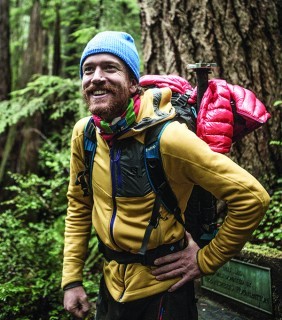
Photo: Dean Leslie
Colorado native Rickey Gates has chosen his own unique route as a runner, with top finishes at some of the most grueling races in the U.S. including the Dipsea trail race near San Francisco, Mount Washington Road Race in New Hampshire, Empire State Building Run-Up and Mount Marathon in Alaska, as well as some of the fastest known times (FKTs) on notable trails. The 34-year-old now living in Madison, Wis., also spent time working as a dishwasher in Antarctica and has ridden his motorcycle hundreds of miles to embark on new running adventures. Gates recently started the FKT Project, developing classic bronze belt buckles that will serve as awards for the most prominent FKT marks. This year also marks the third summer of his weeklong Hut Run Hut trail running camps in Colorado.
Why do you run?
In my opinion, we all need something we do consistently decade after decade. For me it’s running, but it can be anything—knitting, drawing, cooking. It’s a baseline. It can come back to us and allow us to see ourselves as reinvented.
Where do running and meditation intersect?
I believe that running is its own type of meditation. You’re focusing on your breath, your thoughts, your physical sensation, and trying to stay present. I say the same thing about meditating. You’re trying to get your head into a space where you are both aware and unaware of your body and all the rest of the world melts away. You’re left with this pure, blissful state of energy and flow.
Where is your favorite place to run?
Probably around the Aspen area. For most of us, you combine nostalgia with an already incredibly beautiful place and it’s hard to screw that one up. The trails around the Aspen area are in my opinion some of the best in the world, and I’ve been running them for about 20 years.
Why do you like long-distance motorcycle rides?
It has a similar sort of feeling [as running] that it gives me. Running is a lot more real in the sense that you really have to treat this machine, your body, with the utmost respect. I have one bike at my mom’s house that has 100,000 miles on it. That’s a lot of miles for a little engine. I used to name my vehicles, but I stopped. I was anthropomorphizing them too much and spending too much money trying to keep inanimate objects alive.
How did you come up with the FKT Project?
The idea came up thinking about these iconic routes that have inspired me as much if not more than any race I’ve done. They are in places where chances are we’re never going to have races on that terrain, which is fine. It’s just a little extra something on your attempt. I want to see it grow to other mountains. It’s been fun putting that question out there and asking the general public what they think are the biggest and most coveted FKTs.
Should performance-enhancing drug culprits be banned from trail racing?
The rules in our sport say if convicted, you get a two-year ban. If you serve your ban and that’s what we’ve agreed on, then that’s what happens. In looking at the values of our sport, of my sport, it has to do with camaraderie, compassion, forgiveness, and it doesn’t have anything to do with walls. It bugs me quite a bit that people are trying to put up walls in this sport. I think that’s totally wrong. To be honest, if people want to use drugs and compete in the races I’m competing in, so be it. If that’s the way they want to beat me, that’s fine. I see people building walls in our sport as just as greedy as the drug users themselves.
What races are on your calendar for this year?
I’m returning to Alaska for the Mount Marathon Race. I’m sure I’ll find other interesting races, but in the past few years that race has epitomized what real mountain running is to me. A race from bottom to top and back down with no set course and a lot of people who are really excited about it. It’s the least contrived race I’ve run in the states, if not beyond as well.
The post Q&A with Rickey Gates: Fastest Known Trailblazer appeared first on Competitor.com.
Photos: Scenes from a Running Trip to Cuba
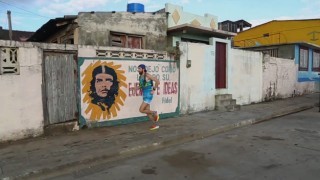
We spent a week exploring Cuba on foot in early March, running some of the country’s historic trails and immersing ourselves with local runners in the city of Santiago and the small seaside town of Baracoa. The goal of our trip was not to make political statements about the current social or political conditions in Cuba, but instead to support Cuban runners and children by donating gear and organizing kids races. Amid a socialist system and economic limitations, we discovered beauty, hope, pride and joy in a land that’s destined for change. Click through the photos below to see some of the scenes from our trip.
VIDEO: A Running Adventure in Cuba
Photo Gallery
1 of {count}
Back to Start
View Larger Image
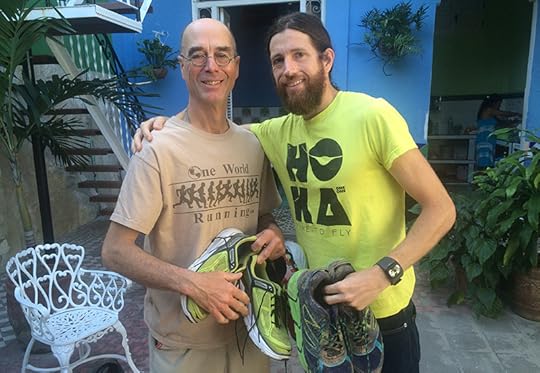
Scenes from a Running Trip to Cuba
What made our legal and fully authorized eight-day running odyssey possible—and really our intent of going in the first place—was that it would be part of a cultural exchange that would help bring dozens of donated running shoes to share with children and young runners via the Boulder, Colo., nonprofit One World Running. The organization was started in 1986 by journalist Michael Sandrock (left). Professional runner Michael Wardian (right) jumped at the chance to join the trip and helped collect used shoes and new gear from sponsors to share with Cuban runners. Photo: Brian Metzler
View Larger Image
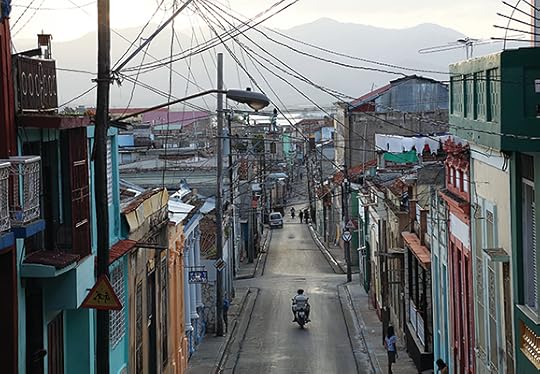
Scenes from a Running Trip to Cuba
A common street scene in Santiago de Cuba. Photo: Steve Godwin
View Larger Image
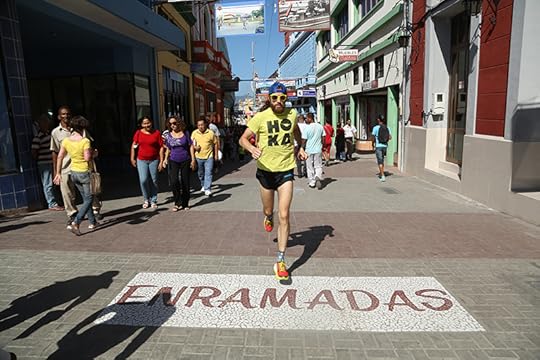
Scenes from a Running Trip to Cuba
Wardian runs through the recently refurbished pedestrian mall in Santiago de Cuba. Photo: Steve Godwin
View Larger Image
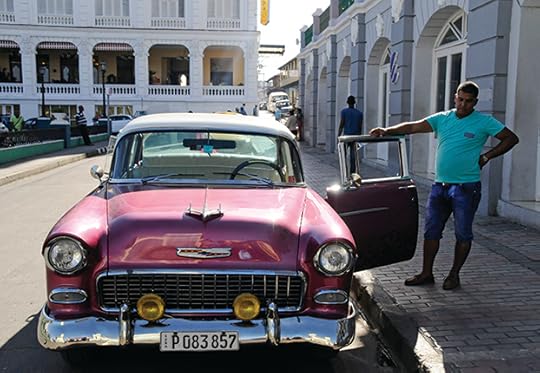
Scenes from a Running Trip to Cuba
The proud owner of this 1955 Chevy Bel Air poses for a photo in Cespedes Square in Santiago de Cuba. Photo: Brian Metzler
View Larger Image
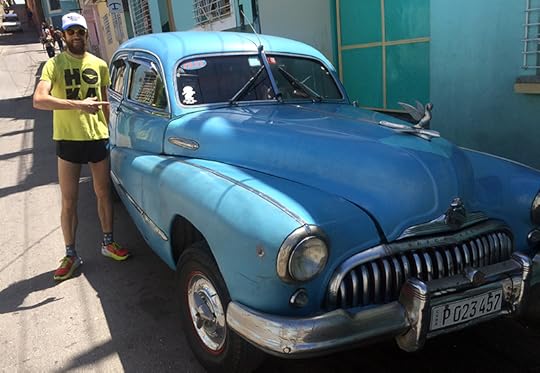
Scenes from a Running Trip to Cuba
Wardian hams it up next to a mid-1950s Buick during a run in Santiago de Cuba. Photo: Brian Metzler
View Larger Image

Scenes from a Running Trip to Cuba
Santiago was founded by Spanish explorers in 1515. The Cathedral of Our Lady of the Assumption has been the site of a church in Santiago de Cuba since 1522. Photo: Steve Godwin
View Larger Image

Scenes from a Running Trip to Cuba
The mojitos at the Hotel Casa Granda in Santiago de Cuba are first rate. Photo: Steve Gowin
View Larger Image
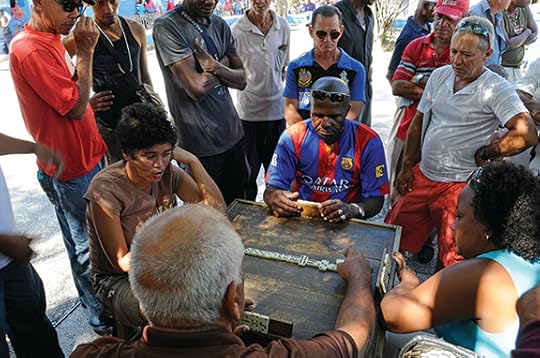
Scenes from a Running Trip to Cuba
Passionate dominoes games could be found in every park and city square in Santiago de Cuba. Photo: Brian Metzler
View Larger Image
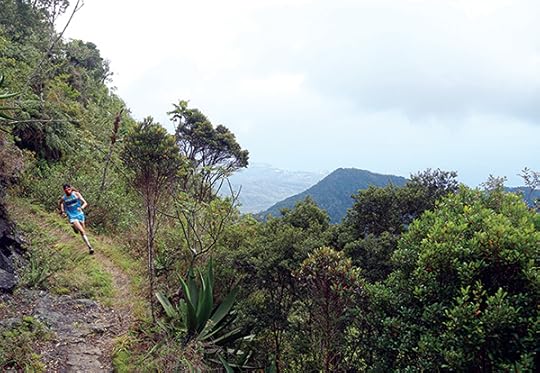
Scenes from a Running Trip to Cuba
Wardian runs on a singletrack trail in Turquino National Park just west of Santiago de Cuba. We spent three days running and hiking the trails inside the park. Photo: Steve Godwin
View Larger Image
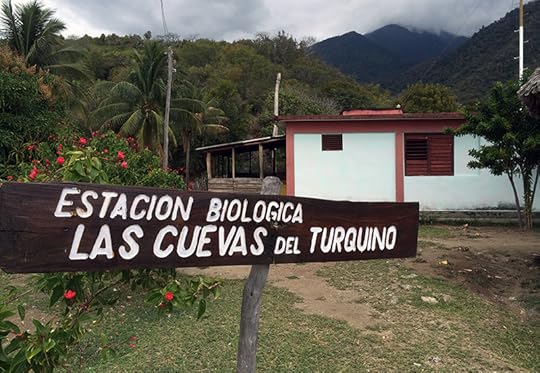
Scenes from a Running Trip to Cuba
The south entrance to Turquino National Park, adjacent to the Caribbean Sea. Pico Turquino, Cuba's highest peak, is nestled in the clouds in the background. Photo: Brian Metzler
View Larger Image
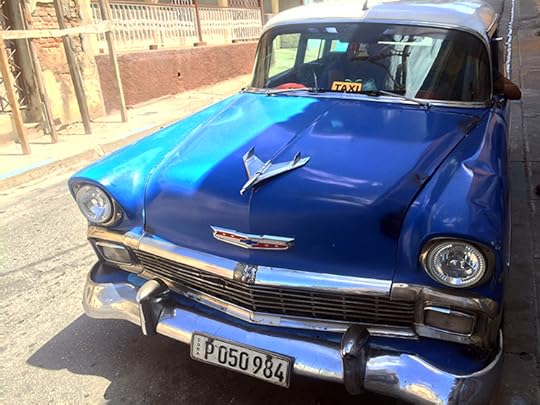
Scenes from a Running Trip to Cuba
We traveled by taxi from Santiago de Cuba to the seaside village of Baracoa, a four-hour drive that included a stop to a viewing platform overlooking Guantanamo Bay. Photo: Brian Metzler
View Larger Image
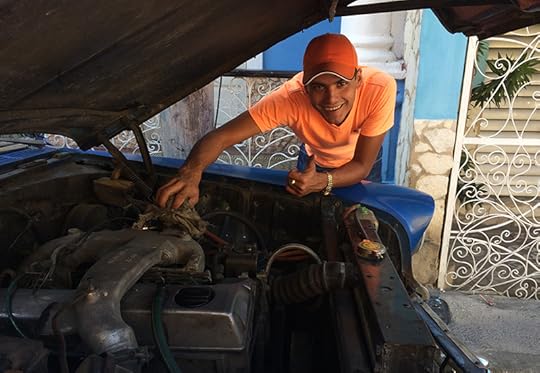
Scenes from a Running Trip to Cuba
There are thousands of well-preserved American cars in Cuba that date back to the 1950s. No new cars (or auto parts) have been imported since the start of the U.S. economic embargo in the early 1960s, but the cars have been maintained thanks to the ingenuity of Cuban mechanics. Photo: Brian Metzler
View Larger Image
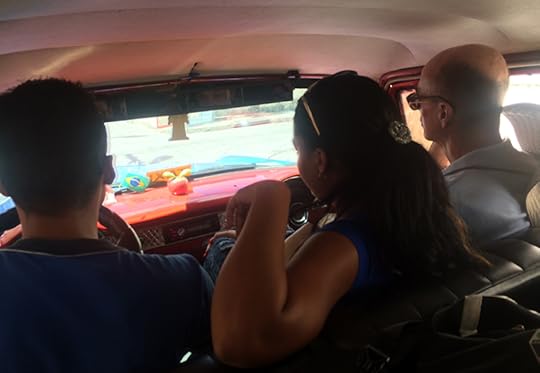
Scenes from a Running Trip to Cuba
The view from inside our '57 Chevy on the way to Baracoa. Photo: Brian Metzler
View Larger Image
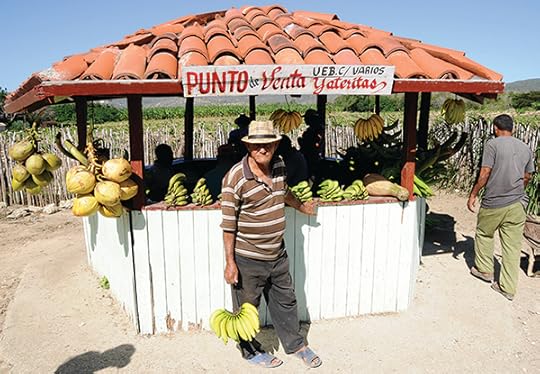
Scenes from a Running Trip to Cuba
Fruit stands offering fresh coconuts and bananas were plentiful along the road. We bought the bunch of bananas from this vendor for about a dollar. Photo: Brian Metzler
View Larger Image
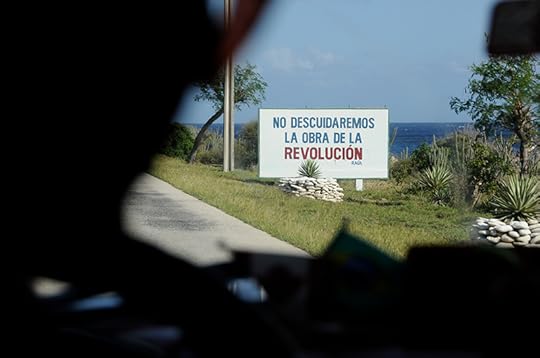
Scenes from a Running Trip to Cuba
Tourists don’t typically experience any of the latent Cold War tension that is finally starting to erode at a diplomatic level, but signs supporting the Cuban Revolution are everywhere. This one has a quote from Raul Castro that reads: "We do not neglect the work of the Revolution." Photo: Brian Metzler
View Larger Image
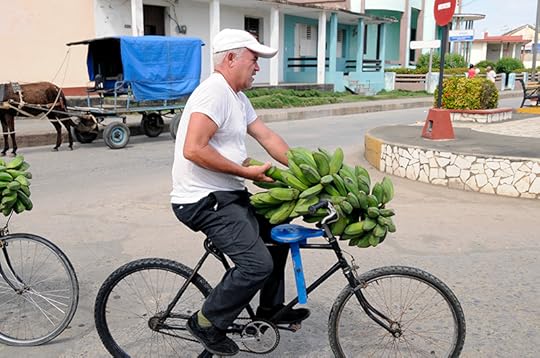
Scenes from a Running Trip to Cuba
The modes of transportation in Baracoa are basic—bicycles, horses and donkeys pulling carts, bike taxis—but they get the job done. Photo: Brian Metzler
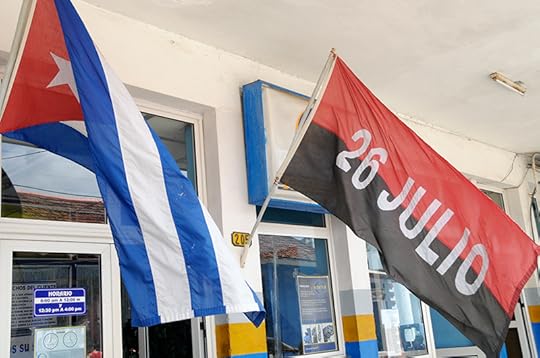
Scenes from a Running Trip to Cuba
The origins of the Cuban Revolution can be traced back to the 26th of July Movement, named after the failed attack on the Moncada Barracks by Fidel Castro's rebel soldiers. The vanguard revolutionary organization led by Castro eventually overthrew the Fulgencio Batista dictatorship in 1959. Photo: Brian Metzler
View Larger Image
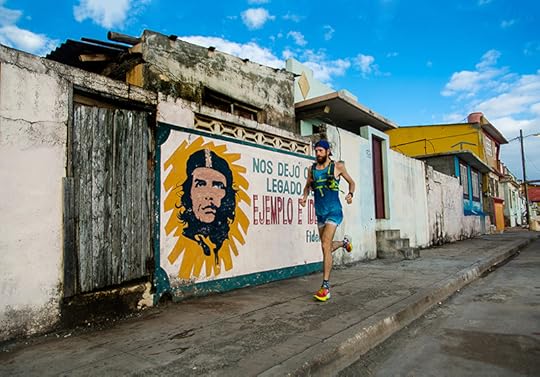
Scenes from a Running Trip to Cuba
Che Guevara, an Argentine doctor who played a big role in the Cuban Revolution, is still hailed as a hero nearly 50 years after his death. This sign honors him with the quote from Fidel Castro: "He left us a legacy, his example and ideas." Photo: Steve Godwin
View Larger Image
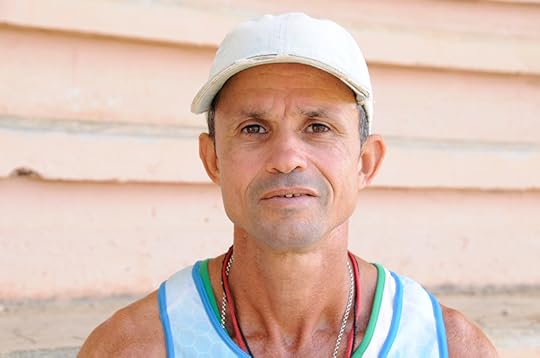
Scenes from a Running Trip to Cuba
In Baracoa, we connected with running coach Arnaldo Campos, a 43-year-old former national-class marathoner with a 2:31 PR. He twice competed internationally for Cuba, once in Spain and another time in the Soviet Union, and also won the Havana Half Marathon a couple of times. Now a schoolteacher and competitive masters runner, he continues to share his passion, leading both a performance-oriented group and a low-key women’s group. Photo: Brian Metzler
View Larger Image
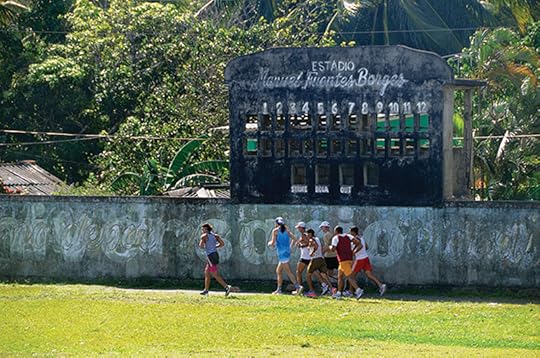
Scenes from a Running Trip to Cuba
Without a track to run on, Campos and his group meet to run twice a week inside the circa 1960s baseball stadium in Baracoa. Photo: Brian Metzler
View Larger Image
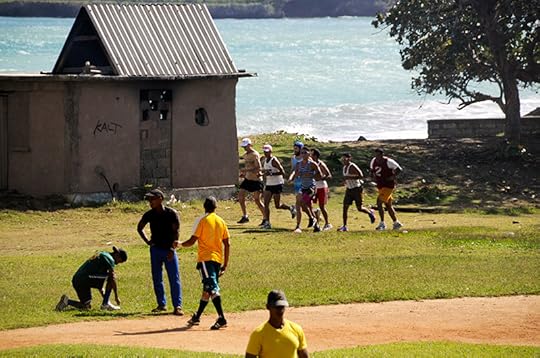
Scenes from a Running Trip to Cuba
After a warm-up run, we did a brief speed session with Campos' runners around the perimeter of the stadium. Photo: Brian Metzler
View Larger Image
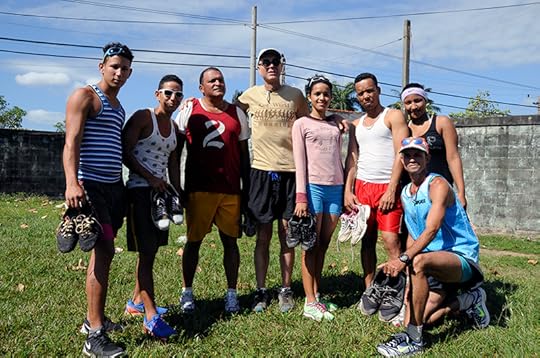
Scenes from a Running Trip to Cuba
Over the past 30 years, One World Running founder Michael Sandrock (center) has tirelessly helped collect and distribute more than 250,000 pairs of shoes to children and aspiring young runners in Cuba, Haiti, Honduras, El Salvador, Guatemala, Belize, Senegal, Tanzania, Mexico and the U.S. Photo: Brian Metzler
View Larger Image
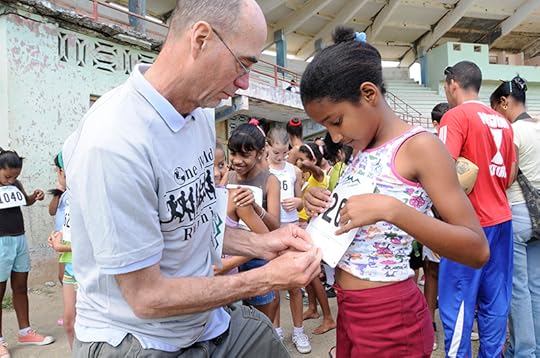
Scenes from a Running Trip to Cuba
In Baracoa, we helped organized kids races—something that Sandrock and One World Running have been doing for many years. Photo: Brian Metzler
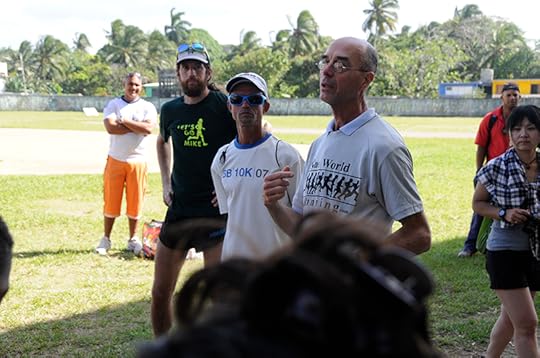
Scenes from a Running Trip to Cuba
Sandrock first visited Cuba in the early 1990s to interview Olympic track greats Alberto Juantorena and Ana Fidelia Quirot for his superlative 1996 book, “Running with the Legends.” It was during one of his original trips to Cuba, shortly after the fall of the Soviet Union, that he again realized the potential impact of sharing used shoes with fellow runners if he took the time to collect them in the U.S.—namely sharing the ability to experience the freedom and passion of running. Photo: Brian Metzler
View Larger Image
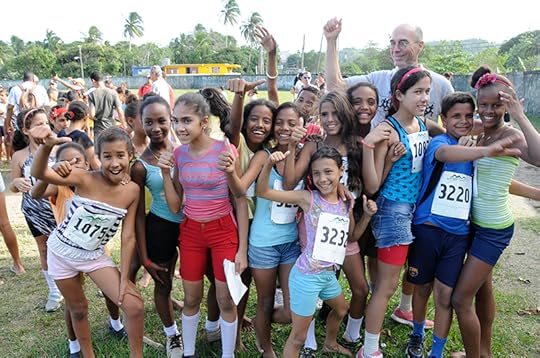
Scenes from a Running Trip to Cuba
The kids participated in sprints, middle-distance events, relays and long jump. "Seeing the kids smiling and laughing and getting so excited is what it's all about," Sandrock says. "It's about sharing the same joy of running that we have back home and sometimes take for granted." Photo: Brian Metzler
View Larger Image
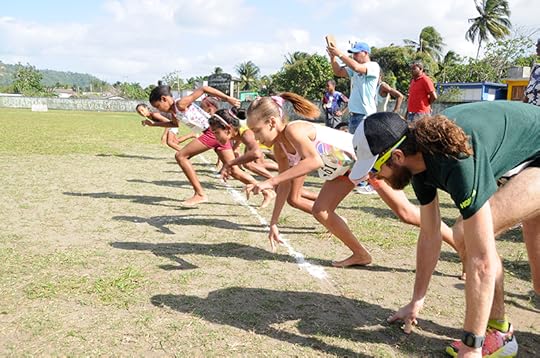
Scenes from a Running Trip to Cuba
Wardian joined in for the fun in the 100-meter dash—and lost badly in both the boys and girls heats. Photo: Brian Metzler
View Larger Image
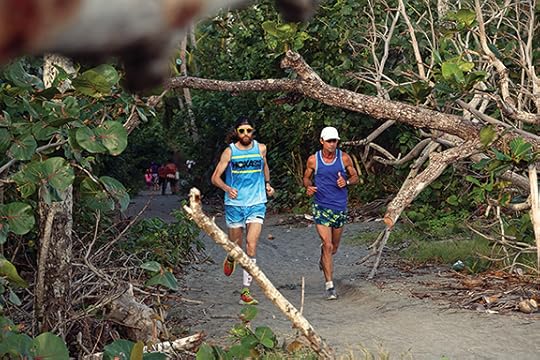
Scenes from a Running Trip to Cuba
During our three-day stay in Baracoa, we ran with Campos on some of his favorite routes, including this sandy trail adjacent to the beach. “It starts by sharing a bond with running and shoes, but many times, especially with Campos and the people in Baracoa, it develops into much deeper, lasting friendships,” Sandrock said. “That’s what running is all about, and that’s why I still enjoy it. We’re all one world and everything is connected. Everyone is connected to each other and you can really feel that through running and the people you run with, and that’s why it’s so satisfying.” Photo: Steve Godwin
View Larger Image
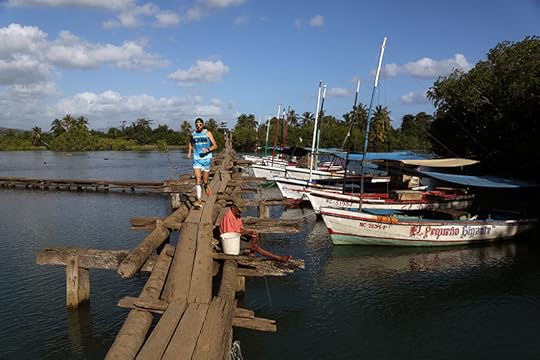
Scenes from a Running Trip to Cuba
We discovered this rickety plank bridge over Rio Miel in Baracoa. Photo: Steve Godwin
View Larger Image
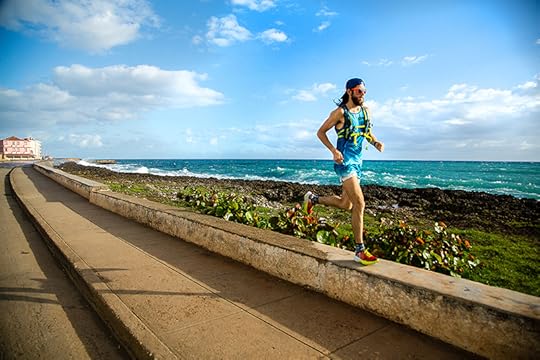
Scenes from a Running Trip to Cuba
Running the seawall in Baracoa. Photo: Steve Godwin
View Larger Image
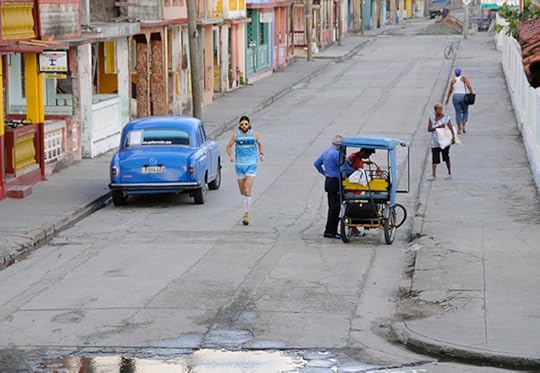
Scenes from a Running Trip to Cuba
A typical street scene in Baracoa. Photo: Brian Metzler

More Galleries
The post Photos: Scenes from a Running Trip to Cuba appeared first on Competitor.com.
Tech Trends: Google Sheets—A Free and Powerful Training Log Option

Google Sheets is an easy, customizable, collaborative and inexpensive way to log and review your training activities.
Runners today have a plethora of options to use for logging their daily workouts. Smartphone apps and online training tools along with GPS technology can save time by automating a number of these tasks. No longer are we required to put pen to paper.
Online training logs like Training Peaks, Strava and Final Surge offer an abundance of features and stats. And while the basics can be free, a paid subscription is required for top-level features and the ability to communicate and share your training with a coach.
For those wanting a powerful but less expensive solution, Google Sheets can serve as a great training log. You don’t need to be an accountant or numbers geek to start recording and reviewing your training in Sheets. Organizing and recording your training data in a spreadsheet is straightforward and provides room to customize in the future.
You won’t see an activity feed of your friends’ latest runs or be able to download your last workout. But Sheets is an easy to use, collaborative and inexpensive way to log and review your training activities.
It’s built for collaboration.
Google Sheets, like Google’s other Drive apps, was built for collaboration. Athletes and coaches can both plan, edit and review the week’s training plan. Instead of overloading each other’s email, important coach/athlete discussion can take place in the spreadsheet and help determine guide future training decisions.
Sheets also allows control of who has access and is able to make edits to spreadsheet. For those who like to share their workouts and progress, it’s easy to do with Google Sheets. By creating “read-only” links, teammates, training partners, medical professionals and others can take a look at your training log.
It’s free!
Online training logs with features allowing for athletes and coaches to share and collaborate aren’t cheap. Sites featuring plans that allow for coach/athlete interaction, like TrainingPeaks and Final Surge, cost between $100-600/year. Google Sheets and its collaborative features are completely free.
There are tradeoffs. If GPS running watch integration or automatic uploads are a must, Sheets is not for you. Other online training logs require less setup, so we’ve created a free training log template. For runners/coaches getting started and those who want a less expensive way to log training, Google Sheets is powerful and free option.
Google Sheets also has free iOS and Android apps, so you are able to record and review your training on the go.
Start with a blank canvas.
With Sheets, training logs can be as basic or complex as you like. Whether it’s recording who you ran with or the day’s weather, you are able add columns or rows for the data that you feel is important. You are in full control of the activity information that makes up your training log.
To get up to speed on spreadsheet basics, Google provides a helpful learning section. Video tutorials on YouTube can also be a great place to view how others create and customize spreadsheets.
How to get started:
We’ve created a free training log template. (Hover the mouse over abbreviations.)
The steps following will help you get started:
Login or create a Google account: drive.google.com
Visit the free training log template: http://bit.ly/RunLogTemplate
In the upper right hand corner of the browser, select “File” & “Make a copy…”. The template is now saved to your Google Drive account.
In the next installment of the Tech Trends, we’ll show you some tips and tricks to help you get the most out of your new training log.
RELATED: Why You Should Keep a Training Log
The post Tech Trends: Google Sheets—A Free and Powerful Training Log Option appeared first on Competitor.com.
April 25, 2016
Check Out Sara Hall’s 2016 London Marathon Data!
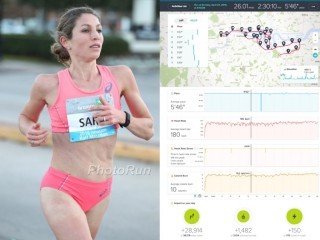
Sara Hall, shown here competing at the Houston Half Marathon earlier this year, knocked a minute off her personal best at Sunday's London Marathon. Photos: PhotoRun.net/Fitbit
Bouncing back from a disappointing DNF at the U.S. Olympic Trials Marathon in February, American Sara Hall finished 12th at Sunday’s London Marathon in a new personal best 2:30:06—over a minute ahead of the mark she posted in Chicago last fall.
Hall, an ASICS sponsored athlete who is also an ambassador for Fitbit, shared some race-day data with us from her Fitbit Surge GPS watch:
Total distance: 26.01 miles (Apparently she knows how to cut the tangents!)
Average pace: 5:46
Fastest split: 5:27 (Mile 3)
Average heart rate: 180 bpm
Total steps: 28,914
Calories burned: 1,482
Calorie burn rate: 10 calories/minute
“New PR!” Hall Tweeted after the race. “The 26.2 never stops being a work in progress, but gave my very best effort today and offered it up to Him.”
RELATED: Sara Hall Shares Her Chicago Marathon Data
The post Check Out Sara Hall’s 2016 London Marathon Data! appeared first on Competitor.com.
How to Use Races To Train For Other Races
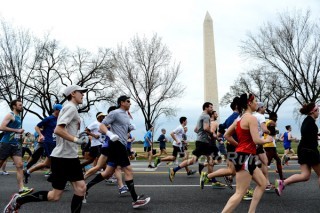
Many runners will use a half marathon 3-4 weeks out from a goal marathon as a final tuneup race. Photo: PhotoRun.net
This summer, I’m signed up to race a half marathon with a friend, a swim relay with another friend, and a 10K as a training run. None of these, though, are my target races for the year. So why am I doing them? And is it a smart idea?
“In general, using races to train for other races makes sense,” says Ian Sharman, a professional ultra runner and the head coach of Sharman Ultra Endurance Coaching.
There are basically two reasons to do races that aren’t your goal races: for fun or for training (or, maybe, for a little bit of both).
If you’re doing a race just for fun, it’s important that it actually be for fun. The swim relay I’m signed up for is more of an event than a race. It will probably be easier and involve more beer than even a normal workout. In these cases, if you say you don’t care about your time, then you better really not care about your time. “You have to have the discipline and lack of ego to say, ‘Today’s goal is ‘X’ and I’m sticking to that goal,’” explains Sharman, even if that goal is just to have fun. This can be difficult.
“Don’t compare yourself to the internet,” jokes Sharman. It’s common for athletes, he said, to run too hard at these for-fun races because they get out there and want to look good or they have expectations about what kind of time they want next to their name. That leads to burnout, fatigue, and injuries. “More people end up over-racing than under-racing,” he says.
But if you’re doing a race for training, instead of just for fun, you should also have intermediate goals that move you toward your big goal race. It can still be fun, but you’re doing it for a reason. Those intermediate goals can be things like practicing pacing, testing out nutrition, or just getting in a hard workout.
“It’s really important for athletes to understand the ‘why’ of a race,” says Sami Winter, a running and triathlon coach with Without Limits Coaching. She’ll tell her athletes to focus on holding a certain pace for a certain portion of a practice race, or to focus on taking in nutrition at a set schedule. If things go wrong, then you have plenty of time to fix them before your main target race.
To know when a training race makes sense in your schedule and what you should be working on in it, Jeff Gaudette, the founder and head coach of RunnersConnect, recommends that you plot out your season with A, B, and C races. Then you can figure out where a tune-up race fits, instead of “trying to force races to fit into your schedule.” Sharman agrees. “Plan your season out from the beginning,” he says.
“B” races, both Gaudette and Sharman say, are typically races that you still expect to race hard and do well in, but you’re not tapered or peaked. It’d be like running a half marathon 3-4 weeks before your big marathon race. You can probably PR in a half-marathon if you’re in shape for a marathon, but “you’re not likely to PR everything,” says Sharman. And, arguably, if you’re PRing in 5Ks, that actually doesn’t bode too well for your marathon, says Gaudette, because it means you’re not doing the kind of marathon training. “C” races are the small local races that you’ll probably just use as glorified workouts.
Both “B” and “C” races are often done to practice some specific skill (pacing or nutrition, for example) in a race atmosphere, to get used to the race experience, or to perform efforts and workouts “that you might not be able to do on your own,” says Gaudette.
RELATED: Pro Tips: How To Bounce Back From A Disappointing Race
When using a race as a workout, there are generally two schools of thought. Either use a shorter race as a hard effort. Or, do an extended workout around or after the race. Alberto Salazar has famously used post-race workouts in his protégé Galen Rupp’s training. You can do that too, says Gaudette, but only if you have some miles under your belt and a specific reason to do the workout.
While you can also use a longer race to prepare for another long race, it’s important that you have the mileage and experience to not get hurt. Sharman often uses marathons or even 50Ks and 50-milers to prepare for other 50-milers or 100-milers. But he’s been doing ultras for a while.
After these races, remember that they were still races, even if you didn’t PR, and you need to adjust your recovery and training accordingly, recommends Gaudette.
There are dangers with racing for training. Yes, you can get hurt or over-tired. But it can also get to you mentally. “There’s the potential to come out of a ‘B’ race in a bad mental space because you didn’t hit the time you wanted to,” says Winter. There’s also the potential to dull the edge, so to speak. If you’re always telling yourself that you’re not going all-out, then you risk not remember how to really go all-out when the time comes.
“There’s a different art to racing,” Winter says.
There’s a reason professional marathoners only do one or two peak major races each year. But, then again, they’re professionals. You might just not realize they’re not racing in peak form. “Their tune-up is most people’s PR,” says Gaudette. And, they’re definitely not signing up for a random half-marathon because a friend wants them to join.
RELATED: Train to Race By Training and Racing Simultaneously
The post How to Use Races To Train For Other Races appeared first on Competitor.com.
Ryan Hall's Blog
- Ryan Hall's profile
- 21 followers



